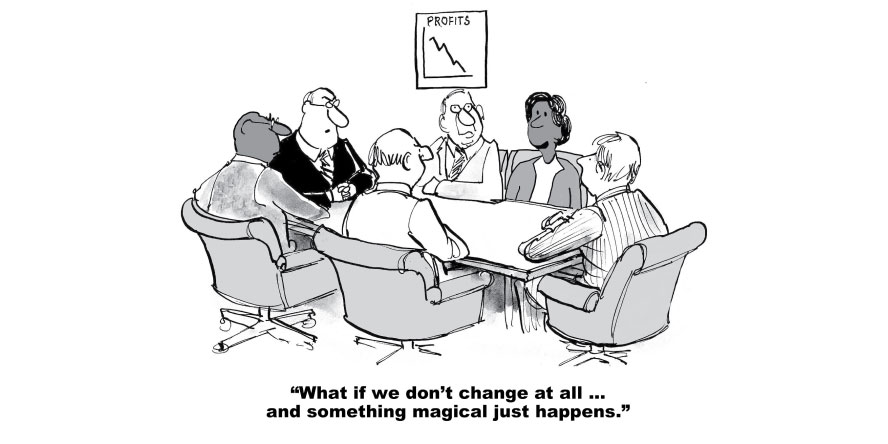
Transformation is easier said than done
In this blog, I am going to explore why trying to implement new initiatives and processes is incredibly difficult due to resistance to change from people within the organisation. In fact, even when the very survival of the organisation could be at stake! I will also look at ways to increase the chance of success.
Why Do Organisations need to Transform?
The pace of change has never been greater. Shifting customer demands and expectations. New technology. Globalisation and innovation driving increased competition. Predatory, often parasitical, tech companies finding gaps in the market to take a slice of the pie. Even Brexit, dare I say. The list is endless.
As a consequence, organisations that are unwilling or unable adapt to changing market conditions will get left behind and ultimately perish. This applies equally to large national organisations as it does to SME’s. Toys R Us and Maplin being recent casualties. In fact, many large brands would love to be as agile and nimble as some of their smaller SME competitors!
So why would people resist change?
10 years ago I asked myself the same question. There were urgent and justifiable reasons to implement new ways of working. Certainly not change for change sake. To me, these reasons appeared blindingly obvious and I assumed others would see things the same way. So much for assumption!
Things though never quite seemed to go to plan. Some initiatives started and fizzled out, whilst some never got off the ground. Others appeared to take off but before you knew it the team had reverted back to the old way of doing things. Sound familiar?
But why? As Rick Maurer so wisely sums it up, because:
- They don’t get it
- They don’t like it (or want it)
- They don’t like you (don’t trust or have confidence in your leadership)
They don’t get it
Just because what needs doing may seem blindingly obvious to you, doesn’t mean everyone will see it the same way. Meaning gets lost in translation or others may not have access to all the information you have. They may also not have the same experience or analytical skills.
What is critical, therefore, is to take the time to properly communicate what is needed. Why, how, who, what and importantly when. Effective communication needs to be two way. So that is talking and listening (no I mean really listening!).
Patience is also required. You need to keep talking and listening until you are sure the penny has dropped. If they don’t understand it (or see it a different way), they are unlikely to fully support it.
They don’t like it
They may not see the benefits to them or believe there is a better way of approaching it! Although Some people may be driven purely by loyalty, the majority will need to be motivated. They must see the “win-win” and that benefits will be shared equally.
I am not just talking about money (although this may be enough for some). There are a whole variety of factors – job security, improved working conditions, the potential for promotion or greater responsibility, recognition or the potential for personal development.
Sadly, not everyone is motivated the same way. As part of the talking and listening it is imperative to discover what makes your team tick (again, avoid assuming anything!).
They don’t like you
It isn’t personal (always!). Do they respect you or have trust and confidence in your ability to lead or manage the transformation project to a successful conclusion? If not, they are unlikely to be motivated to get on board or actively engage in the process. They may drag their heels, be unsupportive or underperform (not meet KPI’s). In worse cases, actively attempt to frustrate the process or try and undermine the trust and confidence others have in your leadership (create a them and us).
Why might this be? They may believe:
- your motivates are not sincere – you don’t have their interests at heart or are deceiving them
- from past experience, you are not reliable or expect too much of them
- you are unable or unwilling to remove barriers and/or provide the resources they need
The absence of trust, confidence and respect makes securing buy-in and engagement a real challenge. Employees of the 21st Century are not going to perform at a high level or accept change simply because you tell them too!
How do we win Hearts & Minds?
Successful transformation is a team effort and getting everyone on the proverbial bus is critical to success. However, the reasons for resistance to change are numerous, inconsistent and often mysterious. Don’t always look for logical reasons.
Removing these barriers, therefore, requires leaders, managers or team leaders to use all their experience, skills, judgement and empathy to navigate the path through shark infested waters!
Fortunately, in my next blog, I will provide some logical steps you can follow to break down barriers and weave a path through to successful implementation. In the
